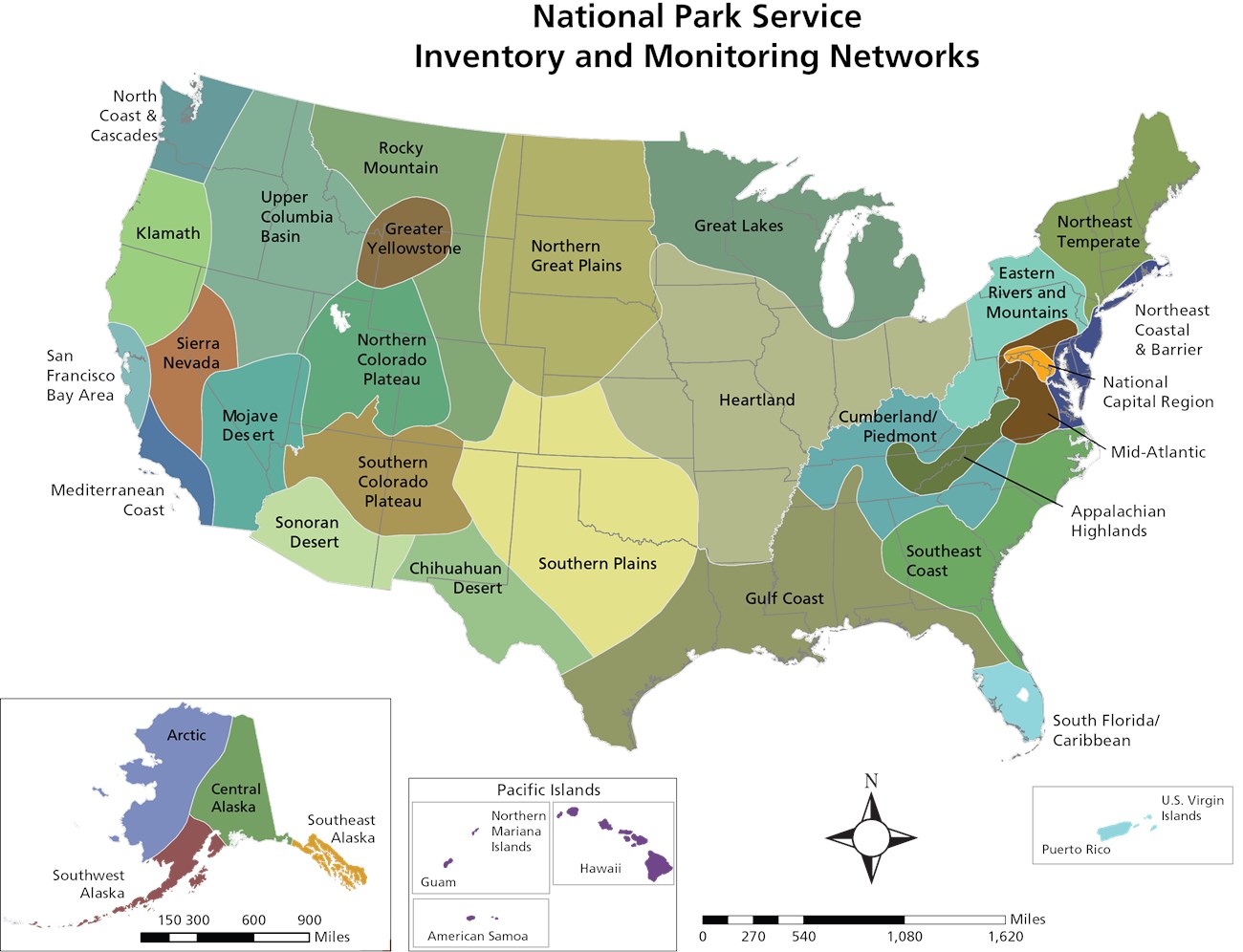Last updated: December 20, 2024
Article
Inventory and Monitoring
At national parks across the nation, the Inventory & Monitoring Program is dedicated to providing managers with the information they need to make sound, science-based decisions that will help support the National Park Service mission of preserving the resources of America’s most special and treasured places for future generations.

Background
Each day, National Park Service (NPS) managers make decisions with the potential to affect park resources for years to come. But in the past, many park managers lacked even baseline information about which resources were in the parks—let alone about the overall state of the ecosystem. This lack of reliable data often made informed decisionmaking difficult.
The NPS Natural Resource Inventory & Monitoring (I&M) Program was created by Congressional mandate in 1998, with the purpose of providing park managers with a broad-based understanding about the status and trends of natural resources to be used in management decisionmaking, working with other agencies, and communicating with the public. The I&M program includes more than 270 national parks with significant natural resources organized into 32 ecoregional networks where natural resource inventory and monitoring activities are conducted.
Today, all I&M networks collect, analyze, synthesize, and supply park managers with reliable scientific information about key park resources, known as “vital signs.” Vital signs are a subset of physical, chemical, and biological elements and processes of park ecosystems that are selected to represent the overall health or condition of park resources, known or hypothesized effects of stressors, or elements that have important human values.
The primary goals of the I&M Program are to:
- Inventory National Park Service natural resources to determine their nature and status.
- Monitor park ecosystems to better understand their dynamic nature and condition and provide reference points for comparison with other environments.
- Establish natural resource inventory and monitoring as a standard practice throughout the National Park System that transcends traditional program, activity, and funding boundaries.
- Integrate natural resource inventory and monitoring information into National Park Service planning, management, and decisionmaking.
- Share National Park Service accomplishments and information with other natural resource organizations and form partnerships for attaining common goals and objectives.

ROBERT BENNETS; NPS; NPS
Highlights and Accomplishments
Baseline natural resource inventories are extensive, point-in-time surveys to determine the location or condition of resources in national parks, including the presence, class, distribution, and status of biological resources, such as plants and animals, and information on abiotic resources, such as air, water, soils, landforms, and climate.
The I&M Program has developed and delivered baseline inventory datasets to more than 270 parks, and continues to fund and develop inventories to meet the highest-priority needs of the parks. These inventories provide the foundation for long-term vital signs monitoring.
Vital signs monitoring provides scientifically sound information on the condition and trend of park natural resources. Monitoring has been implemented in all 32 networks to address physical resources and processes (e.g., air, water, climate, soils, fire, erosion), biological attributes (e.g., species, communities), and ecological processes (e.g., disturbance, productivity).

Each network has implemented a monitoring program tailored to the highest needs of its parks by defining network goals and objectives, identifying and prioritizing potential vital signs, and selecting a modest set of vital signs for long-term monitoring. Criteria used in the final selection of vital signs included ecological significance, management relevance, and legal mandate.
Data and information management based on state-of-the-art standards and practices is a hallmark of the I&M Program. Each network utilizes a comprehensive data management system that protects and enhances the long-term value of monitoring data. All networks and the national program office have made a sustained and substantial investment in database design, data archiving, and in reporting data and derived information.
Status and Future
The highly collaborative nature of the I&M effort has resulted in an integrative, park-based program with strong connections between natural resources inventory and monitoring information and park management. The results of inventories and monitoring performed to date are being used in resource management decisionmaking and planning efforts, resource condition assessments, general park planning documents, park interpretation, and other public outreach efforts.
Those results are made available to managers, planners, interpreters, scientists, and the general public via websites, technical reports, resource briefs, journal publications, presentations, and social media.
As we look to the future, park managers across the country will face increasingly complex and challenging management issues, driven in part and in particular by landscape- and even global-scale factors, such as climate change. The data collection, analysis, synthesis, and reporting performed by the I&M Program will provide early warning of ecosystem changes, with the goal of allowing park managers to develop effective mitigation measures and reduce management costs as they continue to preserve and protect America’s irreplaceable natural heritage and treasures.
